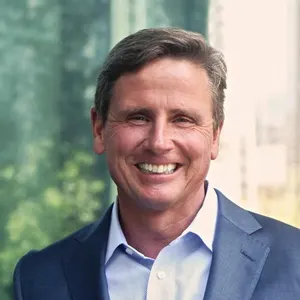The roles of broadcast engineers and CTOs are evolving, becoming more IT-centric as cloud services and cybersecurity needs reshape traditional AV and media technology within media and entertainment.  “When I came into the company in ’22, coming 20-plus years out of IT industry services, it was just an inflection point,” says Eric Hutto, CEO of Diversified, in an interview with NewscastStudio. “AV integration would eventually just run smack into IT, moving to services, cloud, cyber – so many more things would come to bear to shape our ability to deliver what we know today as media, broadcasting, or even really just event spaces.”
“When I came into the company in ’22, coming 20-plus years out of IT industry services, it was just an inflection point,” says Eric Hutto, CEO of Diversified, in an interview with NewscastStudio. “AV integration would eventually just run smack into IT, moving to services, cloud, cyber – so many more things would come to bear to shape our ability to deliver what we know today as media, broadcasting, or even really just event spaces.”
This convergence is fueled by a growing focus on cybersecurity, content monetization, and comprehensive technology solutions among broadcast clients. The shift from project-based integration to outcome-focused implementations represents a departure from the traditional siloed approach. “It’s not so much about the project, it’s about the overall outcome that the business wants to achieve,” Hutto explains. “If you don’t have a holistic view of what it takes to get that business outcome, it will be hard to be profitable because you’ll just be relegated to a space.”
The integration industry faces challenges such as rising labor costs and decreasing hardware prices, alongside talent shortages in broadcast engineering. CIOs now often control budgets previously managed by facilities teams, impacting how integration firms must market their services. These IT-focused buyers seek comprehensive solutions including cybersecurity, cloud capabilities, and managed services. “Our buyers have changed in our industry. We’ve got CIOs now buying my services, not a facilities manager,” Hutto notes. “They’re more accustomed to the bigger technology stack conversations and managed services, and they’re asking themselves, ‘Well, you don’t look like anything I’ve been consuming for 20 years.’"
This necessitates integrators expanding their services. Diversified, for example, has added cybersecurity personnel and partnered with external security firms. They’ve also formed an innovation team to develop technology roadmaps beyond immediate project needs. The demand for flexible staffing for live production is also increasing, leading firms to offer scalable temporary production teams. “We can run your concert and then we can disappear. We can run 300 live events for you and then go away,” Hutto says. “You don’t have to bear the staff. We can even stand up the environment.”
The growing popularity of software-based solutions addresses challenges with hardware refresh cycles. Traditional replacement schedules clash with depreciation periods, creating financial pressure. “Everybody’s trying to figure out how to maximize the revenue from their investment,” Hutto points out. “We’re now looking at our suppliers to actually say, look, if you’re not software-remote capable, in other words, I can commission a program from anywhere in the world, and if you’re not cyber-cloud-oriented, you’re probably not relevant three to five [years out].”
Many integrators are also incorporating design capabilities previously outsourced. This improves accountability throughout project implementation. “We now have our own design consultants that clients enjoy because whoever designed it, someone’s got to install it,” Hutto explains. “If we design it, we can be accountable to it. And we actually can then adjust to things that come up during the actual implementation.”
Cloud technologies are impacting traditional broadcast infrastructure, including outside broadcast operations, shifting capital expenditure models towards operational expense alternatives. This is especially relevant to outside broadcast trucks, which are facing competition from cloud-based remote production. “I think we both see the cloud is going to change the dynamics of a capital-based truck rolling environment,” Hutto says, referring to traditional outside broadcast providers.
Hutto concludes that the broadcast integration industry needs to transition to outcome-based solutions instead of product-focused sales. This requires vendor neutrality to deliver optimal technical solutions. “If I’m truly going to be a solutions company, I have to be agnostic,” he states. “I can’t be motivated by the spiff, because that may not be the best technical answer to that business problem that achieves long-term for the client.”

